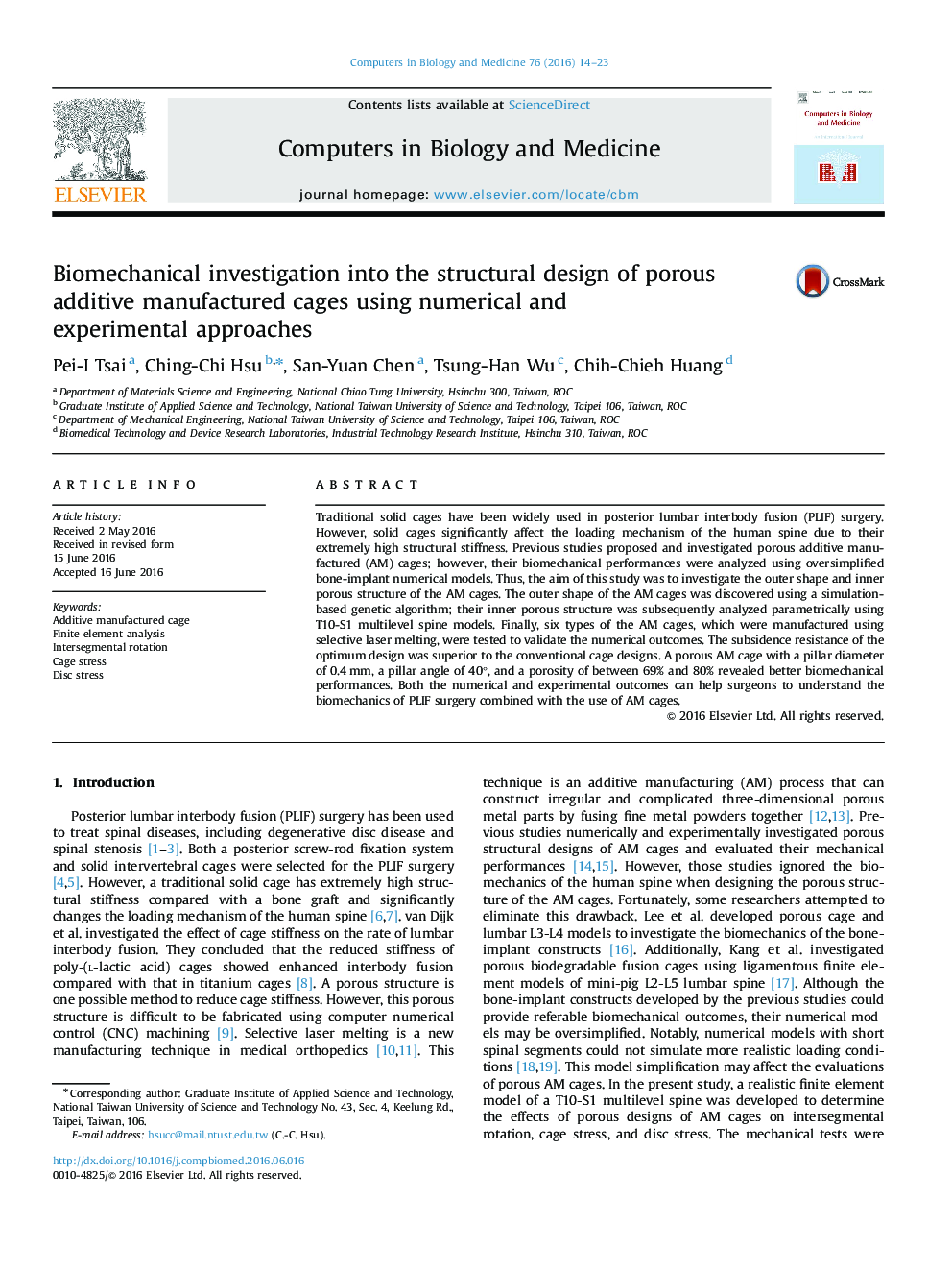| Article ID | Journal | Published Year | Pages | File Type |
|---|---|---|---|---|
| 504761 | Computers in Biology and Medicine | 2016 | 10 Pages |
•The outer shape and inner porous structure of the AM cage could be determined using a simulation-based genetic algorithm and T10-S1 multilevel spine model, respectively.•The optimum shape design of the AM cage had the highest subsidence resistance compared with the conventional designs.•The AM cage with a pillar diameter of 0.4 mm, a pillar angle of 40°, and a porosity between 69% and 80% satisfied all biomechanical requirements.•Both the numerical and experimental outcomes can help surgeons to understand the biomechanics of PLIF surgery combined with the use of AM cages.
Traditional solid cages have been widely used in posterior lumbar interbody fusion (PLIF) surgery. However, solid cages significantly affect the loading mechanism of the human spine due to their extremely high structural stiffness. Previous studies proposed and investigated porous additive manufactured (AM) cages; however, their biomechanical performances were analyzed using oversimplified bone-implant numerical models. Thus, the aim of this study was to investigate the outer shape and inner porous structure of the AM cages. The outer shape of the AM cages was discovered using a simulation-based genetic algorithm; their inner porous structure was subsequently analyzed parametrically using T10-S1 multilevel spine models. Finally, six types of the AM cages, which were manufactured using selective laser melting, were tested to validate the numerical outcomes. The subsidence resistance of the optimum design was superior to the conventional cage designs. A porous AM cage with a pillar diameter of 0.4 mm, a pillar angle of 40°, and a porosity of between 69% and 80% revealed better biomechanical performances. Both the numerical and experimental outcomes can help surgeons to understand the biomechanics of PLIF surgery combined with the use of AM cages.
Graphical abstractThe outer shape of additive manufactured (AM) cages was determined using a simulation-based genetic algorithm; their inner porous structure was subsequently analyzed parametrically using T10-S1 multilevel spine models. Finally, six types of the AM cages fabricated using selective laser melting were tested. The optimum shape design of the AM cage had the highest subsidence resistance compared with the conventional designs. The AM cage with a pillar diameter of 0.4 mm, a pillar angle of 40°, and a porosity between 69% and 80% satisfied all biomechanical requirements.Figure optionsDownload full-size imageDownload high-quality image (379 K)Download as PowerPoint slide
